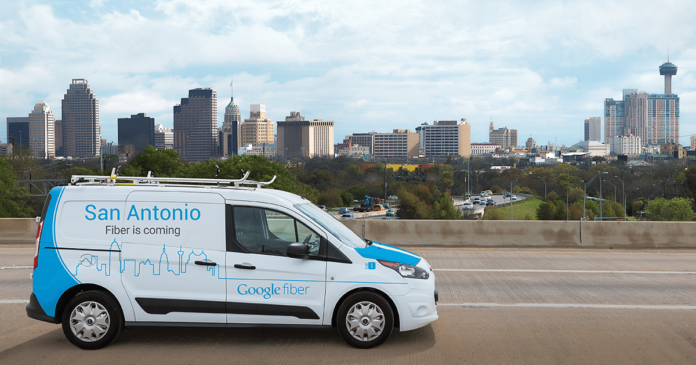San Antonio is next city slated for fiber-to-the-home deployment
Google Fiber this week announced plans to expand its 1-gigabit-per-second home Internet service into San Antonio market; once the network is up and running, San Antonio will be the largest market covered by the tech giant’s FTTH service.
According to its website, Google is in phase two (design) of a five-phase process that goes from exploration and design through construction, sign-up and installation.
“Every mile of this super-fast network has to be planned – we can’t just put it anywhere. We use the data shared with us to create a map of where we can build (based on existing utility poles and water, gas and electricity lines),” according to Google.
Google Fiber is currently available in Austin, Texas; Provo, Utah; and Kansas City, Mo. Google in January announced that its high-speed Internet and high-definition television service is planned for the Atlanta; Nashville, Tenn.; and Charlotte and Raleigh-Durham, N.C., areas. Construction is ongoing in the second wave of cities tapped for fiber deployments. Google has also designated San Jose, Calif.; Portland, Ore.; and Phoenix as “potential fiber cities.”
“Fast-growing cities need Internet speeds that can keep up with their progress,” explained Mark Strama, head of Google Fiber in Texas in an Aug. 5 blog post. “For the 1.4 million residents of San Antonio, one of the biggest and fastest-growing cities in the country, this is truer than ever. Which is why, today, we’re proud to announce that Google Fiber is coming to San Antonio – the largest Fiber city to date. From starting Bexar BiblioTech, the first all-digital public library in the U.S., to being named a leading city in cybersecurity, San Antonio has developed a thriving tech landscape. Hundreds of startups have found their home in the Alamo City through collaborative workspaces and accelerators like Geekdom and Cafe Commerce. Moreover, San Antonio’s recent selection for President Obama’s Tech Hire and Connect Home initiatives will help create a pipeline of tech jobs and narrow the digital divide.”

